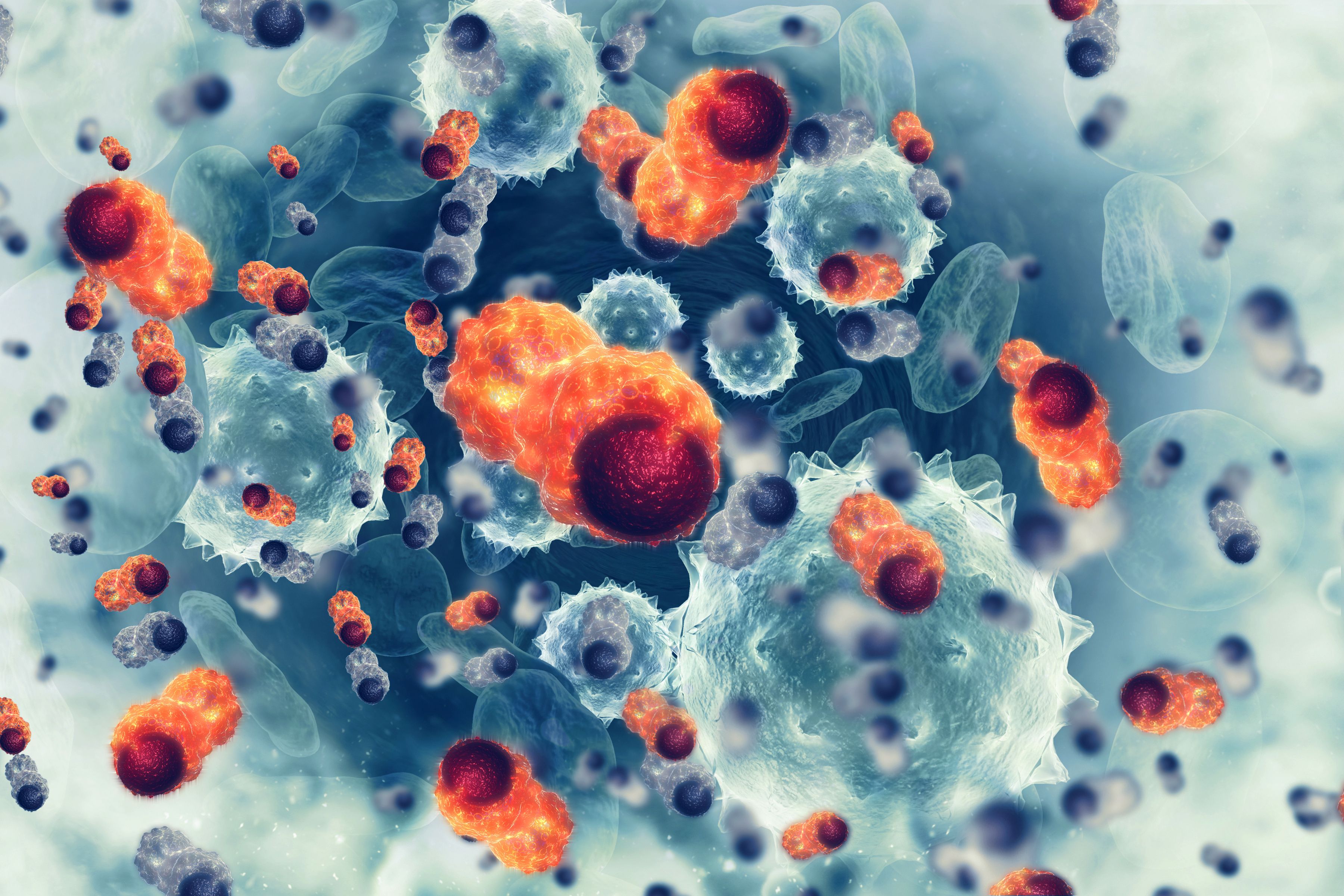Cilta-Cel Yields PFS, Durable Responses in R/R Multiple Myeloma
Patients with multiple myeloma and enduring MRD-negativity are able to achieve the deepest responses with ciltacabtagene autoleucel, according to Yi Lin, MD, PhD.
“Patients who are able to achieve sustained MRD-negativity for at least 6 months or longer are the patients who were able to achieve the deepest and best response, had the longest duration of response, as well as PFS,” according to Yi Lin, MD, PhD, a hematologist and oncologist at Mayo Clinic.

Treatment with ciltacabtagene autoleucel (cilta-cel; Carvykti) in patients with relapsed/refractory multiple myeloma who had sustained minimal residual disease (MRD)-negativity for at least 6 months produced improvements in progression-free survival (PFS) and duration of response (DOR), according to a presentation on data from the phase 1b/2 CARTITUDE-1 study (NCT03548207) at the 2023 Society of Hematologic Oncology (SOHO) Annual Meeting.1
The study enrolled 113 patients, with 97 going on to receive treatment with a single infusion of cilta-cel at a target dose of 0.75 x 106 CAR-positive cells per kg. Patients received conditioning therapy with cyclophosphamide at 300 mg/m2 and fludarabine at 30 mg/m2 5 and 3 days before infusion of cilta-cel. Of those enrolled, 42% were penta-drug refractory and 88% were triple-class refractory. The median prior lines of therapy were 6 (range, 3-18), and 99% of patients were refractory to their last line of therapy.
In the final analysis of the study, which was also presented at the SOHO meeting,2 the median PFS with cilta-cel was 34.9 months. The objective response rate (ORR) was 97.9%, which included a stringent complete response (sCR) for 82.5% of patients treated with the CAR T cells. The median duration of response was 33.9 months and the overall survival had not yet been reached, with nearly two-thirds of patients still alive at a 3-year follow up (62.9%).
Of the responses, 61 were evaluable for MRD at any point, with 56 of these patients (91.8%) testing negative for MRD with a threshold of 10-5. Overall, there were 22 patients who were MRD-negative for less than 6 months and 34 patients who were MRD-negative for 6 months or longer. Of these patients, 10 were MRD-negative for 6 to 12 months and 24 were negative for 12 months or longer.
Baseline characteristics did not vary significantly between those with a sustained MRD-negative response and those without. The only trend that emerged, although not significant, was a longer time since diagnosis in those with a sustained MRD-negative response of 12 months or longer, Lin noted. In those with an MRD-negative response of less than 6 months, the median time from diagnosis was 4.8 months (range, 1.6-16.3). In those with an MRD-negative response that was sustained for 12 months or longer, the median time since diagnosis was 7.0 years (range, 2.5-18.2).
There was also a trend toward those with fewer plasmacytomas having a longer MRD-negative response, but these numbers were small, Lin cautioned. Overall, 27.3% of those who were MRD-negative for less than 6 months had plasmacytomas (n = 6) compared with 20% (n = 2) and 8.3% (n = 2) in the 6- to 12- and 12- or more month groups, respectively.
An sCR was achieved by all patients with a sustained response of 6 months or longer. In those with an MRD-negative response of less than 6 months, the CR rate was 55%, the very good partial response rate was 36%, and the partial response rate was 5%. There was 1 patient without a defined response for an ORR of 95% in this group.
The median DOR was not yet evaluable for those in the sustained MRD-negative groups. In the group that was MRD-negative for 6 months or less, the median DOR was 10.3 months (95% CI, 5.1-15.6). Similarly, median PFS was not available for those with a sustained response. In those with MRD for less than 6 months, the median PFS was 11.0 months (95% CI, 5.4-16.6).
Other characteristics of response to cilta-cel are under exploration, including the expansion and proliferation of the cells in vivo. In the study, only a portion of patients were assessable for MRD, and having a proxy like cell expansion could serve as a useful marker of depth of response, suggested session moderator Thomas G. Martin, MD, associate director of the UCSF Helen Diller Family Comprehensive Cancer Center myeloma program. “There are some patients who receive cilta-cel and by day 15 their white [blood cell] count is 30,000 and it is 28% lymphocytes,” he said. “The question is whether those are the same patients who achieve MRD, and that would be awesome to know.”
References
- Munshi NC, Paiva B, Martin TG, et al. Efficacy Outcomes and Characteristics of Patients With Multiple Myeloma Who Achieved Sustained Minimal Residual Disease Negativity After Treatment With Ciltacabtagene Autoleucel in CARTITUDE-1. Presented at: 11th Annual Meeting of the Society Hematologic Oncology (SOHO 2023); September 7, 2023; Houston, TX. Abstract MM-304.
- Lin Y, Martin TG, Usmani SZ, et al. CARTITUDE-1 Final Results: Phase 1b/2 Study of Ciltacabtagene Autoleucel in Heavily Pretreated Patients With Relapsed/Refractory Multiple Myeloma. Presented at: 11th Annual Meeting of the Society Hematologic Oncology (SOHO 2023); September 7, 2023; Houston, TX. Abstract MM-309.
Newsletter
Stay up to date on recent advances in the multidisciplinary approach to cancer.